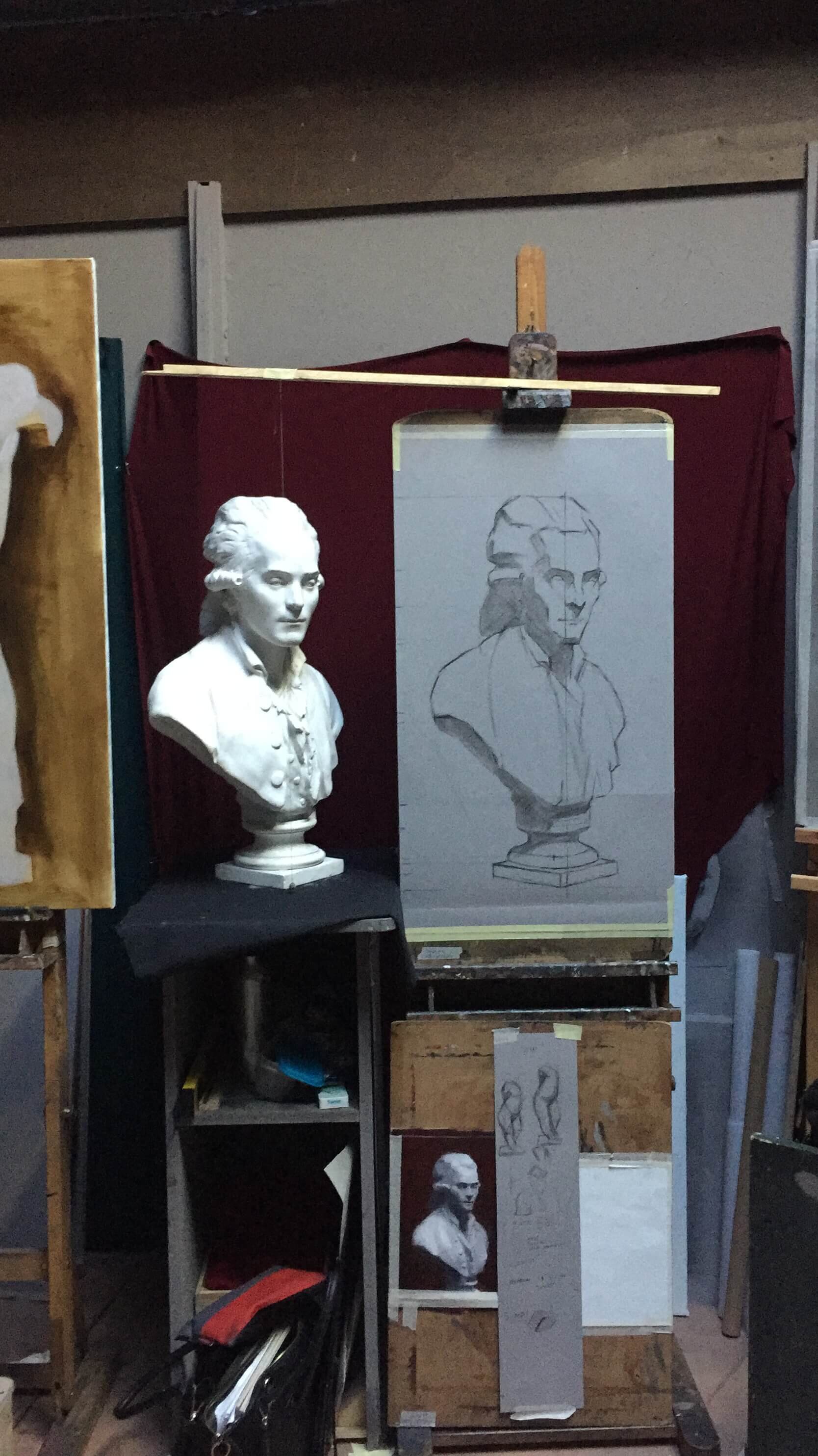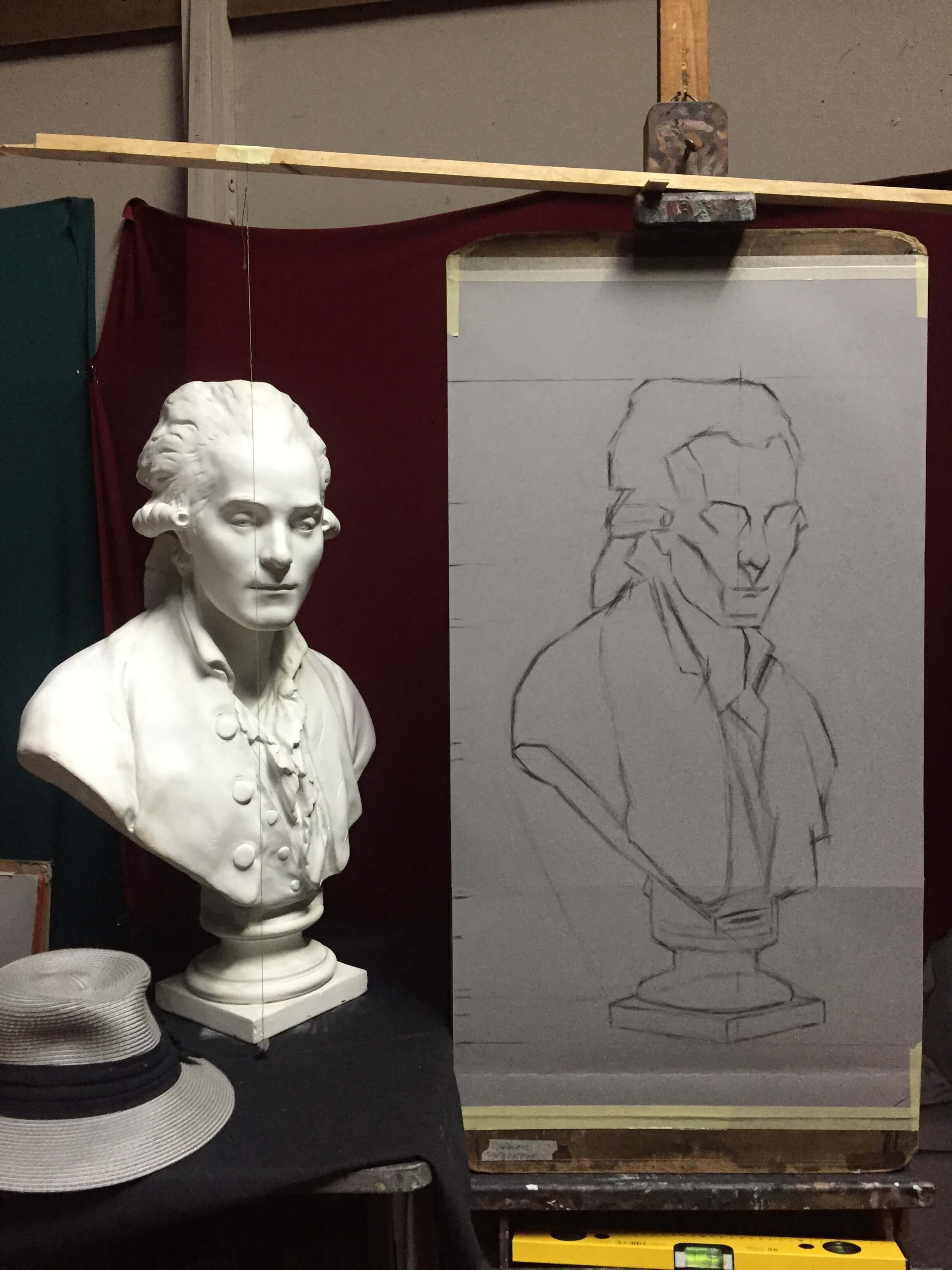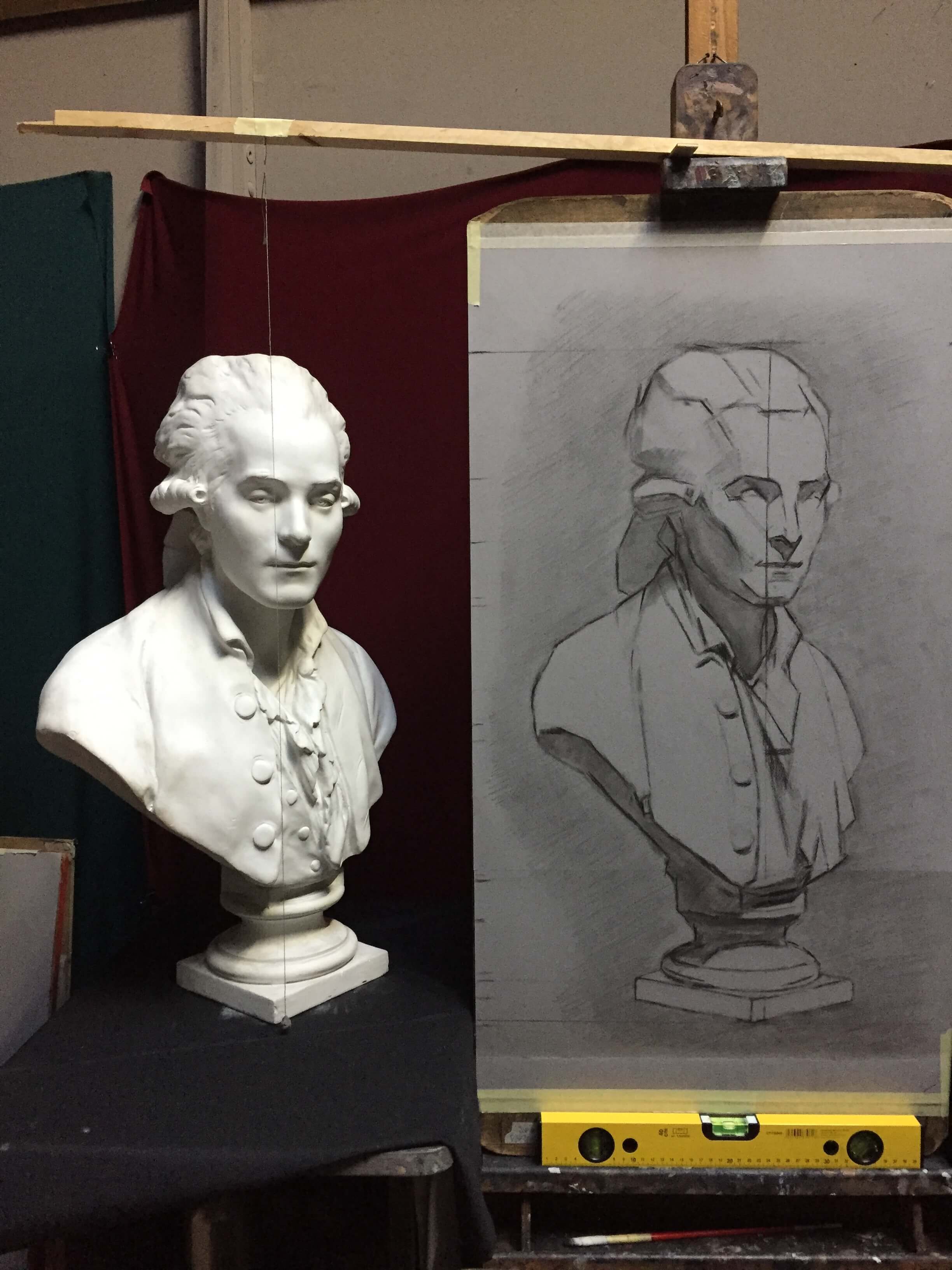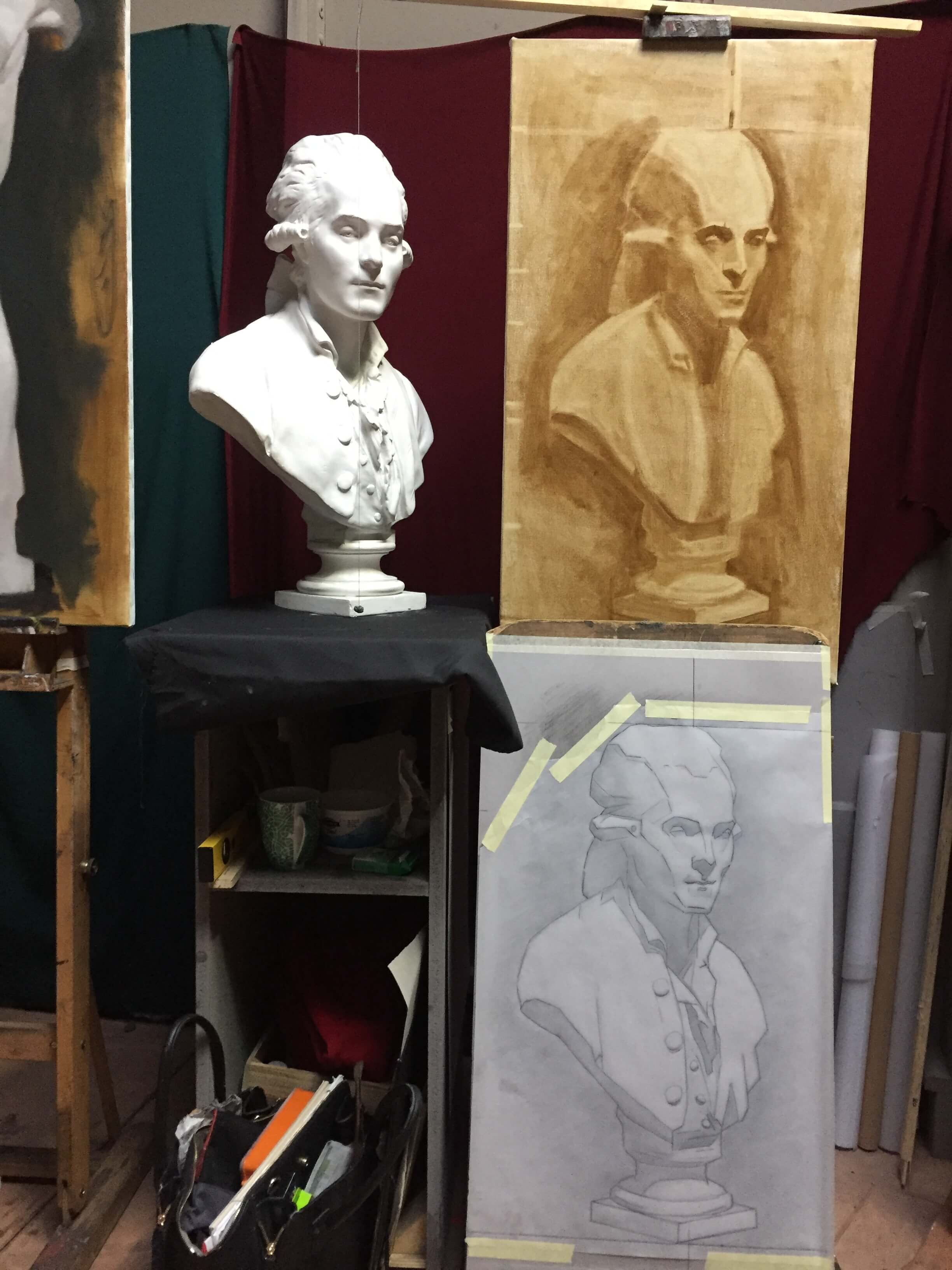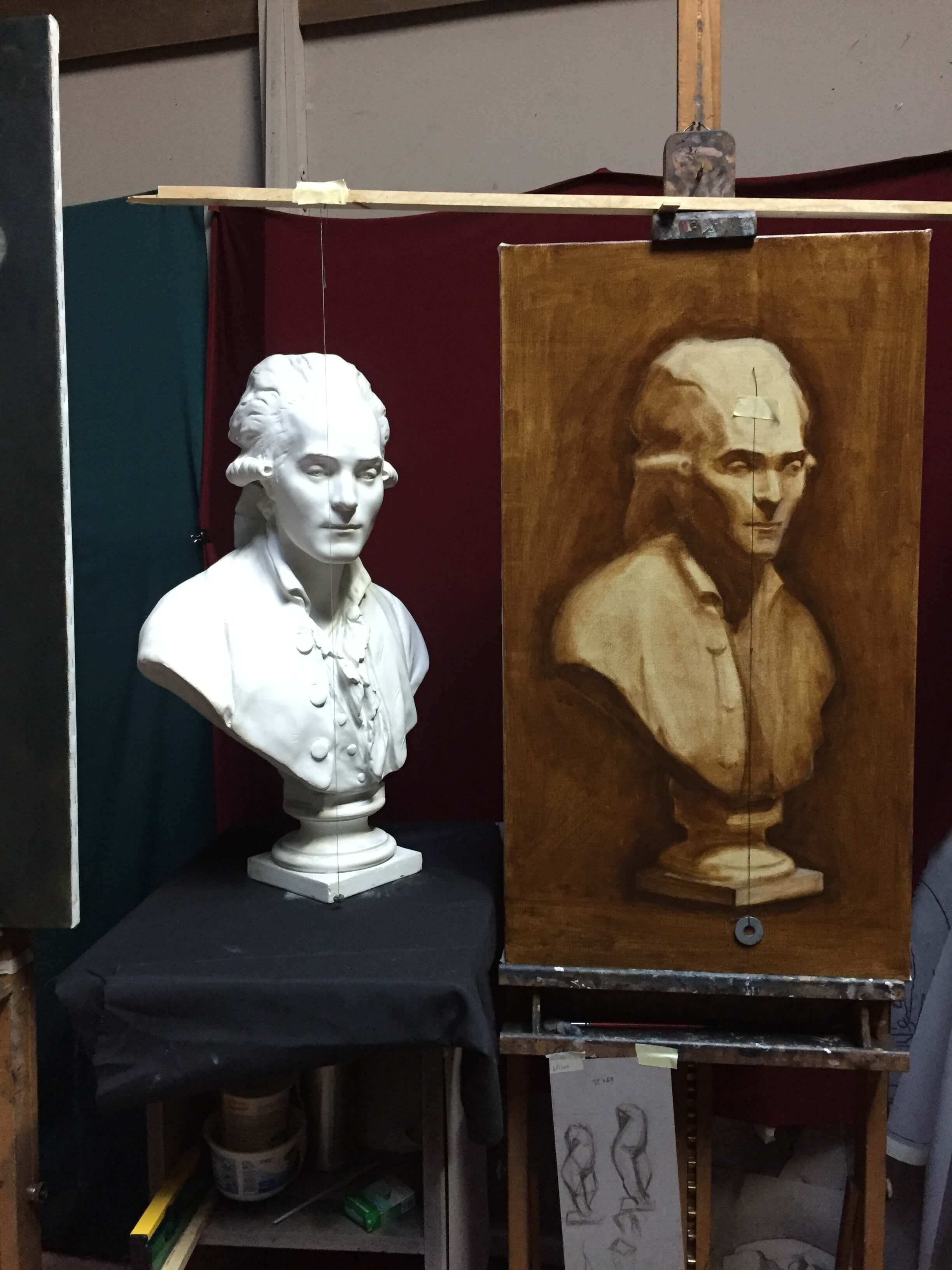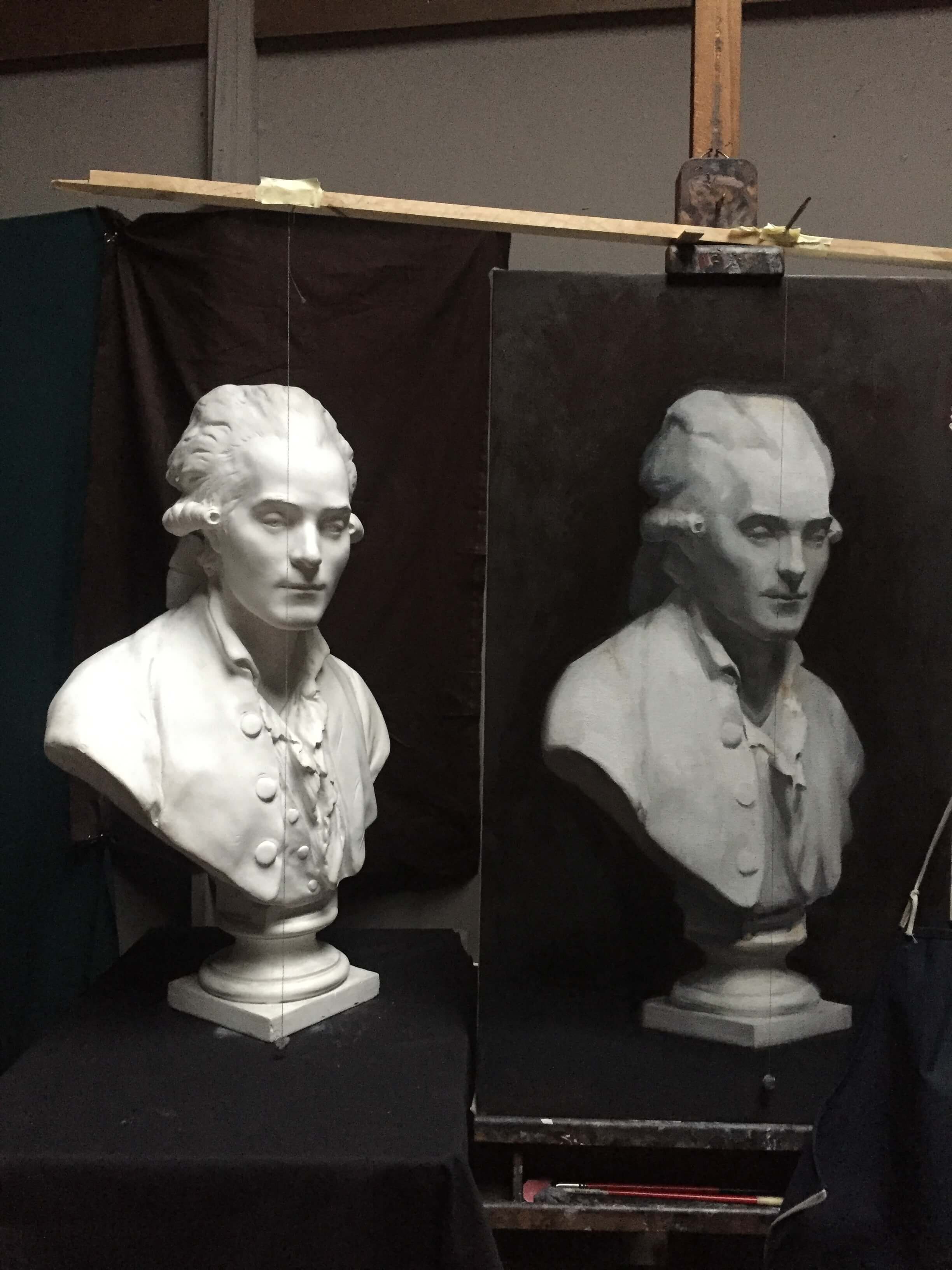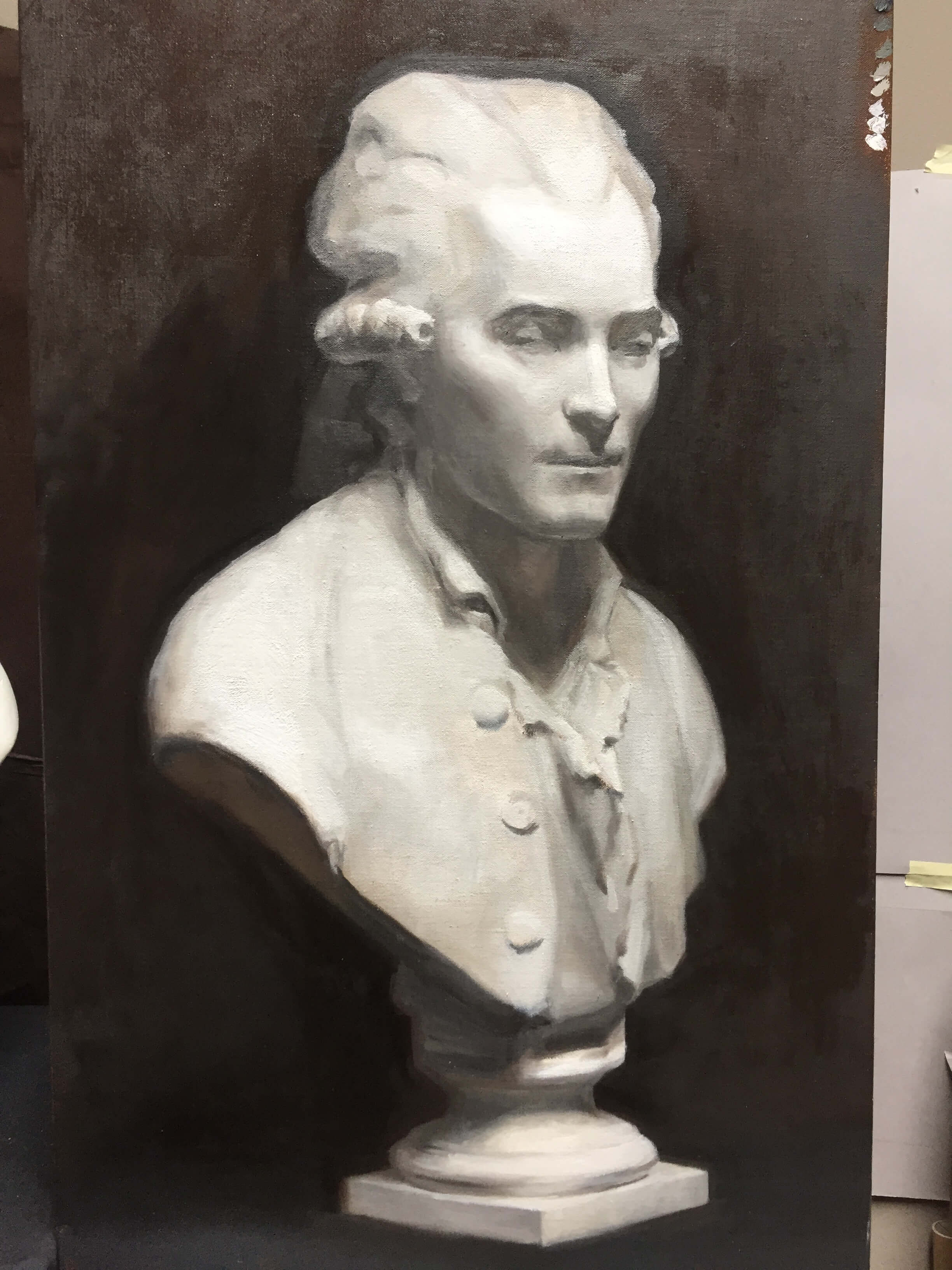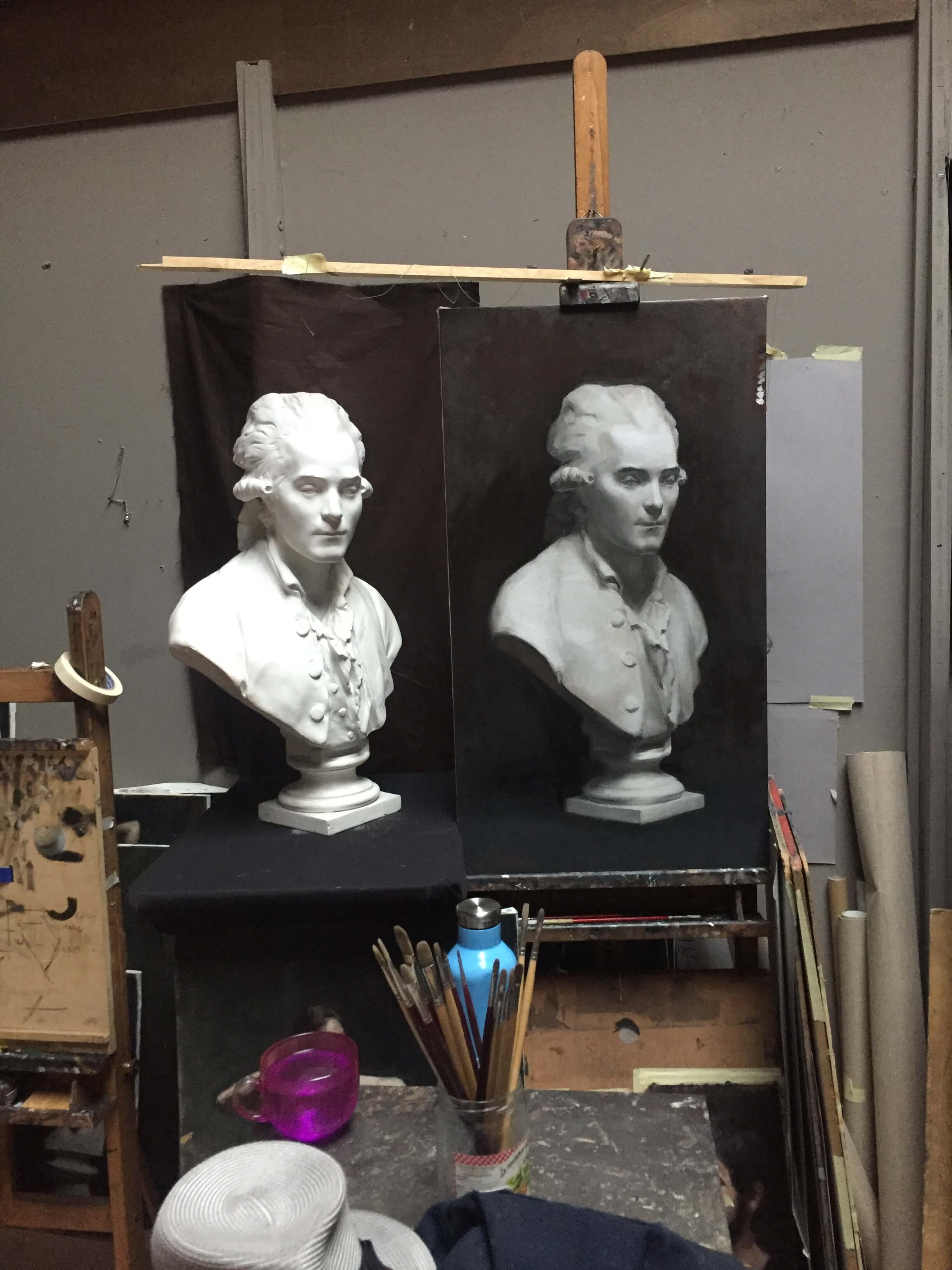What Learning Feels Like
This was a challenging week for me. Week five of an 11-week trimester. Halfway through the trimester, halfway through the academic year. I think a lot of us students had big weeks – and by big I mean big breakthroughs, big jumps in our understanding, big jumps in our ability to represent that understanding visually!
My big learnings began with the head instructor for the second year Painting program, Daniela Astone, giving me a very strong critique. (Daniela is exactly my age. When I first met Daniela, it was like a Sliding Doors moment – what if I’d gone straight to art school out of high school? Would I also have become a professional painter, art teacher, had a long-term partner and a 10-year-old daughter by now? My mind did wander…)
Each day, twice a day (morning and afternoon, not counting evening classes!), one or two teachers give a critique to help you understand your work better, and to help you progress. Critiques are the most valuable aspect to our education, because in this daily activity, slowly slowly (piano piano, in Italian), over time, this is how our eyes are trained to “see” better.
Interestingly, on Monday, Daniela essentially told me to stop waiting for the teachers to tell me what to do. Have my own plan, build my own strategy, design my own approach to achieve my goals. She said I need to take responsibility for my decisions and go with them. She also put a bit of fire under me, saying that if my current cast was too difficult (at this moment in time), I should set it aside, and begin another project so that I can build the skills I need on a more manageable cast. Tantamount to admitting defeat! Failure! This was more than I could take…
So, I went home on Monday night and tried to draw my cast from memory. Stuck. Instantly. Where was the middle of the cast? How high was it to its width? How high up was the chin vs. the chest? Suddenly I realised, I did not KNOW my cast, even though I had been studying him for 4 weeks! (And by him, I mean, a bust of Robespierre, the French revolutionary politician from the late 1800s who was pivotal in the French Revolution and loved the guillotine.)
Now I had my (self-assigned) marching orders. Learn my cast, deeply understand my cast. Which is what I did on Tuesday, and it felt like relief. Finally, I was finding a way to make a very curvy, amorphous 3D cast make sense on 2D canvas. That felt good. No, it felt great.
Daniela teaches us on Thursdays too. I was a little afraid to see her on Thursday, if truth be told. What did she think about me after Monday’s “talking to”? And what would she say about my progress? Well, not very much! She said, “I can see you have found a process that’s working for you. I’m just going to let you work. Oh, and use more colour in your greys!”
Which is where the second big learning came this week. How to paint greys, that are not grey! We are all learning the basics of drawing and values (light and dark) before anything else. If those two elements are correct, colour, paint application and technique can follow. But without those two, you’re going nowhere. So, we start in pencil and charcoal. And then a grisaille palette (white, raw umber, black), and then limited palette (white, black, English red, ochre). And then, in a future painting (I’m not there yet!), a full palette.
But until then, we paint white casts. But white is never white. Actually, white is made up of all the colours of the rainbow. So… where does that leave me with my cast? I certainly shouldn’t only be painting my white cast in white and black… but this is what I was doing.
Until Richard, our teacher today, came in for my critique. And he said, “Why is your cast so cool? Where are the warms? Look at the shadow under the chin on the cast. And then compare it to your painting of that shadow.”
And suddenly I saw. Like someone had turned on a light, suddenly someone had turned a black and white TV into colour. It was that instantaneous. That immediate. That surreal. I blinked, and couldn’t stop seeing how much darker and colder my painted shadow was! This kind of awakening I don’t think gets reversed. So now I can see! But, can I paint what I see? That’s next week’s challenge…
So what does learning feel like? It feels intense! It feels hard. It feels overwhelming. And it feels exhilarating, exciting, and rewarding. I was in bed by 9pm Wednesday night and 10pm Thursday night – exhausted from all the mental activity. But leaving school on Friday evening, chatting to Heidi, a fellow 2nd year student, I reflected on how good it felt to have my work admired by a first year who came into my studio this evening. The first year said, “How did you get your lines to have such beautiful variety? Soft, hard, strong, light. This is a goal for me,” she said, “to get my lines to look like yours.” Wow, I thought. I’m struggling with understanding a complex cast, and how to paint grey so it’s not grey, and I have almost missed how far I’ve come. Within a day I’d pulled together a complex drawing of a seated long pose, with beautiful varied lines to emulate!
Footnote: funnily enough, the day I met Daniela for the first time, the first thing she said to me when I shared my life leading up to arriving in Florence, was, I wish I’d had your life! She wished she’d travelled the world, worked in different countries, experienced another type of life… Sliding Doors indeed!

